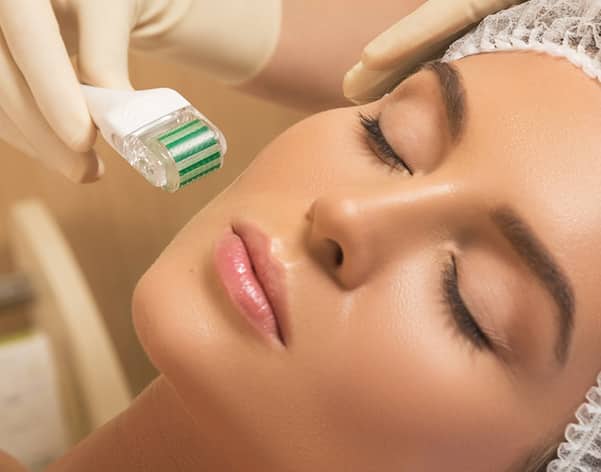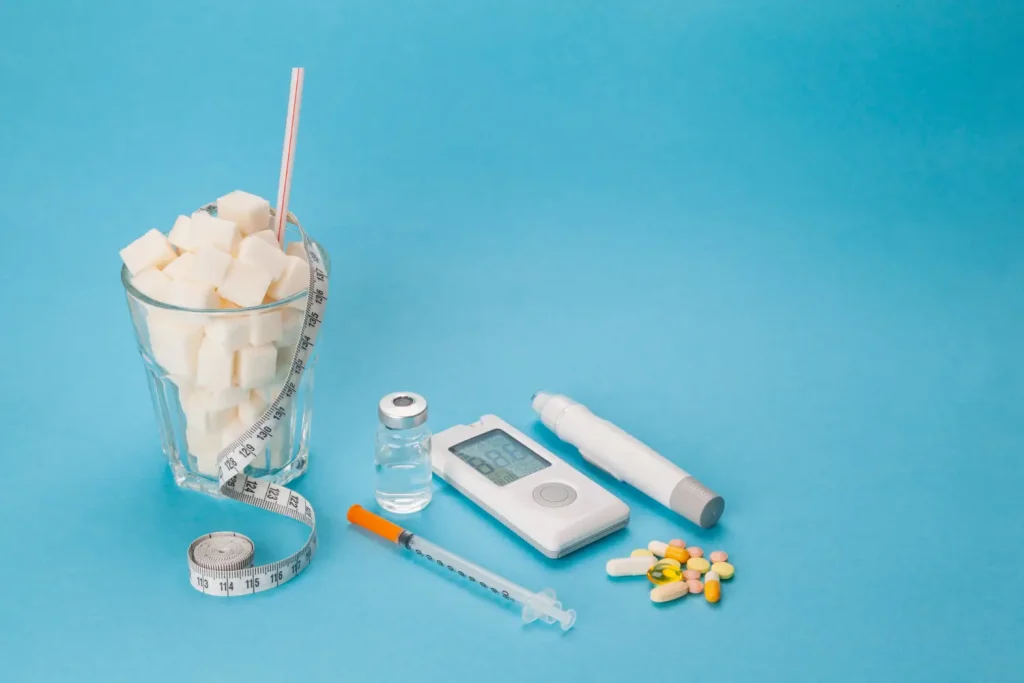Aesthetic physicians, beauticians, and practitioners have a large role to play in taking care of their patients’ skin. Many patients may come into the clinic requesting enhancements of their features that may not be entirely suitable for their facial structure. Good skin complexion that can withstand blemishes and wrinkles are highly sought after, especially as the patients age. The health of the skin will not only improve the look of the face, but it will also assist the effectiveness of other treatments such as botulinum toxin treatment and cosmetic fillers.
As a facial treatment can affect an individual’s confidence, it is important for the practitioner to be entirely well-versed in the various treatments and therapies that are available in the field. This will allow practitioner to offer a service that is highly regarded, attentive to patient needs, and rewarding for both parties.
In 1976, the French doctor Michel Pistor discovered that the skin could be improved via the direct injection of medicine into the skin. This technique became known as mesotherapy, and it rejuvenates the skin and maintains the texture and complexion of a healthy and youthful dermal layer.
This treatment is all the more important as part of a larger industry-wide effort to find effective, biocompatible, and absorbable products/procedures. Mesotherapy’s effects in respect to skin restoration comes from its internal hydrating abilities and promotion of fibroblastic activity. These two properties help to redefine the skin tone and improve skin resilience and elasticity. From a simple injection into the superficial dermis, the skin can be improved to be firmer, brighter, and more moisturized.
Currently, mesotherapy is used to improve minor marks and lines and to treat specific conditions such as cellulite, acne, redness or rosacea, the accumulation of fat cells, hair weakening and loss, and even stretch marks. Mesotherapy is also used to immediately hydrate the dry or dehydrated skin of patients
Preparation for a Mesotherapy Session
Various spots on the face can be viable targets for mesotherapy. Thus, it is highly recommended for the practitioner to be well-versed with the nuances of the dermal layers and the anatomy of the face, so as to avoid any accidents. The injection is intended to be as direct as possible in the affected area.
It is crucial for both the practitioner and patient to have a mutual understanding on what the procedure will entail. Before the procedure, a practitioner should ensure that the patient’s medical history is being investigated, so as to prevent any potential contraindications. The practitioner must inform the patient of the full and realistic expectations for the session, which includes the duration of the session and the maintenance required after completing the treatment. The practitioner should also educate the patient on the potential effects; precautions and limitations, which also includes the number of sessions required; the potential cost; and the commitment expected of them. The elucidation of these topics to the patient will enable them to legitimately sign the needed consent form.
Also, to increase the accuracy of the procedure, take photographs of the skin condition to use as visual evidence and as a baseline for the treatment. Constant monitoring will help to improve the approximation of correction required and the recording of progress during the procedure. The treatment can be commenced once all these preparations are undertaken and completed.
Mesotherapy for Hydration
Mesotherapy is an ideal technique for improving and rejuvenating dry skin because it adds hydration directly into the dermal layer.
Instead of manually injecting the solution using a syringe, use a mesogun to maintain equal depth and volume when injecting the product from one spot to another. The equal distribution can be adjusted according to the severity of the condition. The common injection would be a rate of 300 injections in a minute into a depth of 1mm into the dermal layer. This balanced treatment can avoid any irregular shapes and lumps and can provide ease and comfort to the patient by reducing any painful sensation caused by the needle.
An in-depth knowledge on mesotherapeutic products including Belotero, can also be very useful for conducting a mesotherapy session. Some clinics and practitioners encourage mixing and customizing the products to fit the needs of their patient, which is dependent on their age, sex, and other external causes. It is advisable to have a template ready to reduce the preparation time.
One of the tailored protocols for hydration includes the following:
- 30% is a non-cross-linked hyaluronic acid dermal filler with medium molecular weight (2%).
- 30% is a mixture of poly-revitalizing nutritive complex. This includes a mixture of hyaluronic acid, vitamins, co-enzymes, amino-acids, nucleic acids, and reducing agents.
- 32% is a mesolift mixture or cocktail. It should contain hyaluronic acid, vitamins B, C, A, and E, and organic silicium.
- The last 8% should be an analgesic ingredient, such as procaine 2% 20mg/ml.
The mesolift mixture is customizable according to the indications and demographic. It can be adjusted to appeal to certain treatment goals, such as firming the texture of the skin or an anti-aging result. Older patients are more suitable for a cocktail that is designed for regeneration and the ingredients like centella asiatica, an herbaceous plant that can heal the skin’s texture, and collagen stimulants and dermal actives, such as elastin, organic silicium, and dexpanthenol. Younger patients may benefit from a radiance cocktail, which is a formula that enhances the skin’s glow. As they do not necessarily suffer from any undesirable skin marks (unless noted), additional plumpness and improvement is generally provided at the request of younger patients.
When it comes to rehydrating the dry skin, four sessions of mesotherapy should be carried out to achieve the optimal result. These sessions can be carried out either in one or two weeks intervals according to the patient’s convenience. If the patient is satisfied with the effects of the treatment, prolong the outcome by repeating the treatment every two to three months.
Methods
- Take photographs before and after each session for reference.
- Clean the skin using the antiseptic chlorhexidine solution.
- Preload the mesogun with 5ml of the mixture. This is the amount used for a full facial treatment.
- Use the nappage injection technique at a depth between 14mm in the superficial-to-mid dermis layer. This technique guarantees a fast and linear treatment. Each droplet should deliver 0.1ml and should a few millimeters apart.
- As for excess volume, leave it on the skin to be absorbed fully. Only clean after ensuring that it is no longer absorbable.
- Once the treatment is complete, finish the procedure with an administration of a recovery cream. Recommend a broad-spectrum, SPF 50 sunscreen to avoid any potential photo-damage from the sun.
- Advise the patient to not wash their face for a few hours post-treatment.
- Repeat the same preparation, dosage, technique, and aftercare for a total of four sessions with fortnightly intervals in between.
The practitioner should monitor the skin condition after the process. Since the volume used and injection depth is minimal, there is low risk for bruising.
Example treatment
In one case study, a late 30s female with a history of using multiple dermal fillers and products. She had volume replacement using hyaluronic acid (HA) fillers, dynamic wrinkles correction with botulinum toxin type A, and a HA product for skin hydration. Although the initial result of the HA product was rather impressive, the skin grew dry and became unimpressive by the end of the day.
A scheduled mesotherapy session can increase the longevity and efficacy of the skin hydration product, which will help to sustain the hydrating effect. By reaching mutual consent, the patient and the practitioner scheduled four mesotherapy sessions targeting the face.
After the treatment, the patient reported that other than the treatment on the top lip area, which was slightly discomforting, the whole process was not painful.
Outcome and Feedback
The patient’s baseline condition was having fresh and rejuvenated skin in the mornings but dehydrated skin by mid-afternoon as a result of her lifestyle and work stress. After receiving mesotherapy treatment; however, she noticed that her skin became capable of sustaining the freshness until the evening.
In the short time after the first session, there was a noticeably visible improvement in the hydration and skin texture, together. By comparing the baseline photographs taken prior and those showing the results of the fourth session, it becomes clear that the result achieved was above and beyond the expectations of patient. Other than the visible effect of this enhancement, the patient additionally had the experience of fully-rested and fresh skin lasting a whole day, through to the evening or night.
Generally speaking, positive result can be maintained by repeating the treatment for the following two to three months. Patients can come for skin reviewing at least two months after the fourth session.
Conclusion
Mesotherapy is a highly effective treatment for instant skin hydration and rejuvenation. The customizability of the procedure allows it to be effective and comfortable with different types of skin and demographics, making it accessible to most. Mesotherapy is also suitable for young patients who want to boost their skin’s complexion. The additional nutrients largely benefit the complexion and health of the patient’s skin in the long run.
Also, this treatment features minimal invasiveness and risk of complications in comparison to other cosmetic treatments, such as laser treatments and microneedling. Practitioners who offer this therapy in their clinic can provide high-quality treatment that offers sustainable patient satisfaction.
REFERENCES
- Pistor, M., (1976) ‘What is mesotherapy?’, Le Chirurgien-dentiste de France, 46 288, p. 59.
- Savoia, A., Landi, S., & Baldi, A., (2013) ‘A new minimally invasive mesotherapy technique for facial rejuvenation’,Dermatology and therapy, 3(1), 83-93.
- Lacarrubba, F., Tedeschi, A., Nardone, B., & Micali, G., (2008) ‘Mesotherapy for skin rejuvenation: assessment of the subepidermal low-echogenic band by ultrasound evaluation with cross- sectional B-mode scanning’, Dermatologic Therapy, 21(s3), S1-S5.
- Knoll, B. & Sattler, G., Illustrated Atlas of Esthetic Mesotherapy. (London: Quintessence Publishing Company, 2012)
- Duncan, D. I., & Chubaty, R., (2006) ‘Clinical safety data and standards of practice for injection lipolysis: a retrospective study’, Aesthetic Surgery Journal, 26(5), 575-585.
- El-Domyati, M., El-Ammawi, T. S., Moawad, O., El-Fakahany, H., Medhat, W., Mahoney, M. G., & Uitto, J., (2012) ‘Efficacy of mesotherapy in facial rejuvenation: a histological and immunohistochemical evaluation’, International journal of dermatology, 51(8), 913-919.
- Tosti, A. & Pia De Padova, M., Atlas of Mesotherapy in Skin Rejuvenation, (London: Informa Healthcare, 2007)
- Lopez, J. (2015) “Mesotherapy for Facial Skin Hydration”, Aesthetics Journal. https://aestheticsjournal.com/feature/mesotherapy-for-facial-skin-hydration





















